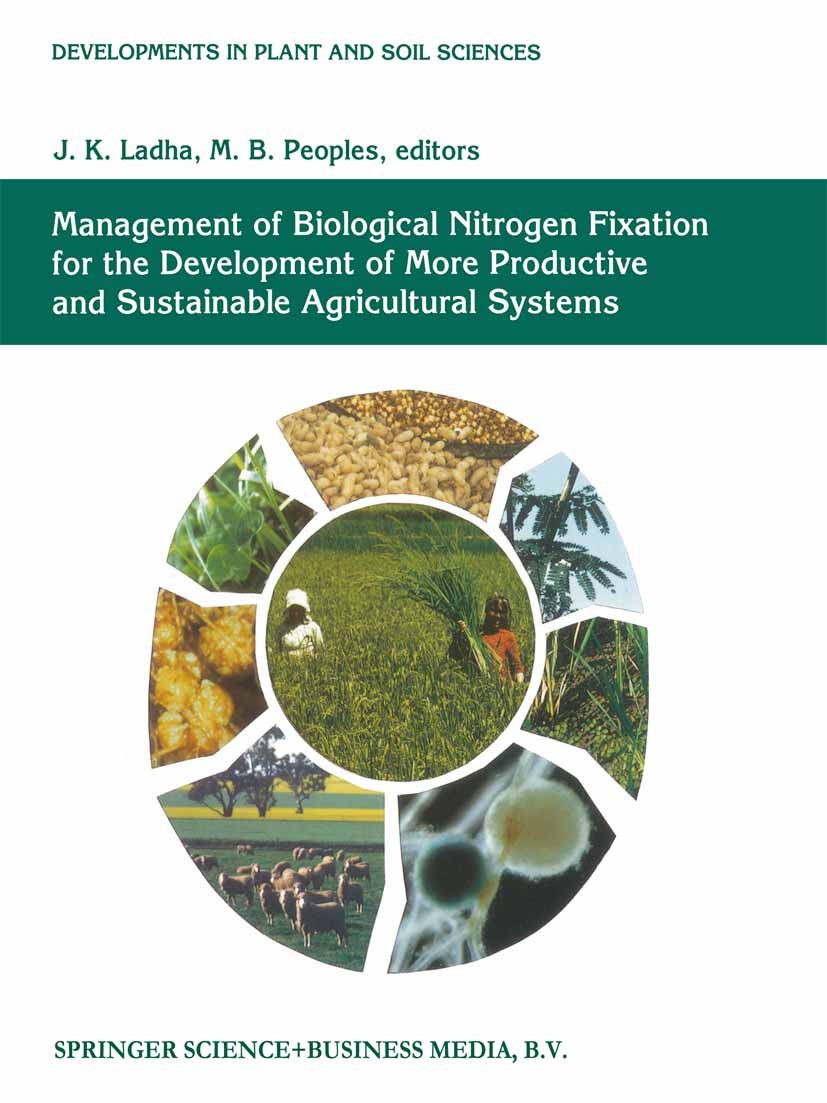| 书目名称 | Management of Biological Nitrogen Fixation for the Development of More Productive and Sustainable Ag |
| 副标题 | Extended versions of |
| 编辑 | J. K. Ladha,M. B. Peoples |
| 视频video | http://file.papertrans.cn/623/622439/622439.mp4 |
| 丛书名称 | Boston Studies in the Philosophy and History of Science |
| 图书封面 |  |
| 描述 | Table 1. Global allocation of arable land between different com modities Globally, cereal cropping dominates cultivated land Commodities‘ Proportion of land area use (around 50% of total area, Table 1). The remain (%) ing arable land is used for production of oilseed, fibre, or food and cash crops. In addition, vast areas are Cereals maintained under temporary or permanent pasture for Wheat 16 forage production (2-3 fold greater than the total area Rice 10 under cultivation and permanent crop; Table 1, Fig. Maize 9 1). All cultivated crops, except for legumes (pulses All other cereals 13 and legume oil seeds) require the soil to provide rel Total 48 atively large amounts of nitrogen (N). It is necessary for the three most important cereals, wheat (Triticum Legumes aestivum), rice (Oryza sativa) and maize (Zea mays), Legume pulses 5 to take up 20 to 40 kg soil N ha -lover a period of 3 Legume oilseeds 6 to 5 months to satisfy the N requirements of the seed and supporting vegetative structure for each tonne of Total II grain produced (e. g. Fig. 2; Myers, 1988). Produc tive pastures on the other hand may assimilate> 100 Other crops I kg N ha- each annum, of which 50 to 90% will b |
| 出版日期 | Book 1995 |
| 关键词 | agriculture; bacteria; green manure; paper; rice; soil; soil fertility |
| 版次 | 1 |
| doi | https://doi.org/10.1007/978-94-011-0055-7 |
| isbn_softcover | 978-0-7923-3414-9 |
| isbn_ebook | 978-94-011-0055-7Series ISSN 0068-0346 Series E-ISSN 2214-7942 |
| issn_series | 0068-0346 |
| copyright | Springer Science+Business Media Dordrecht 1995 |
 |Archiver|手机版|小黑屋|
派博传思国际
( 京公网安备110108008328)
GMT+8, 2025-11-13 19:11
|Archiver|手机版|小黑屋|
派博传思国际
( 京公网安备110108008328)
GMT+8, 2025-11-13 19:11


